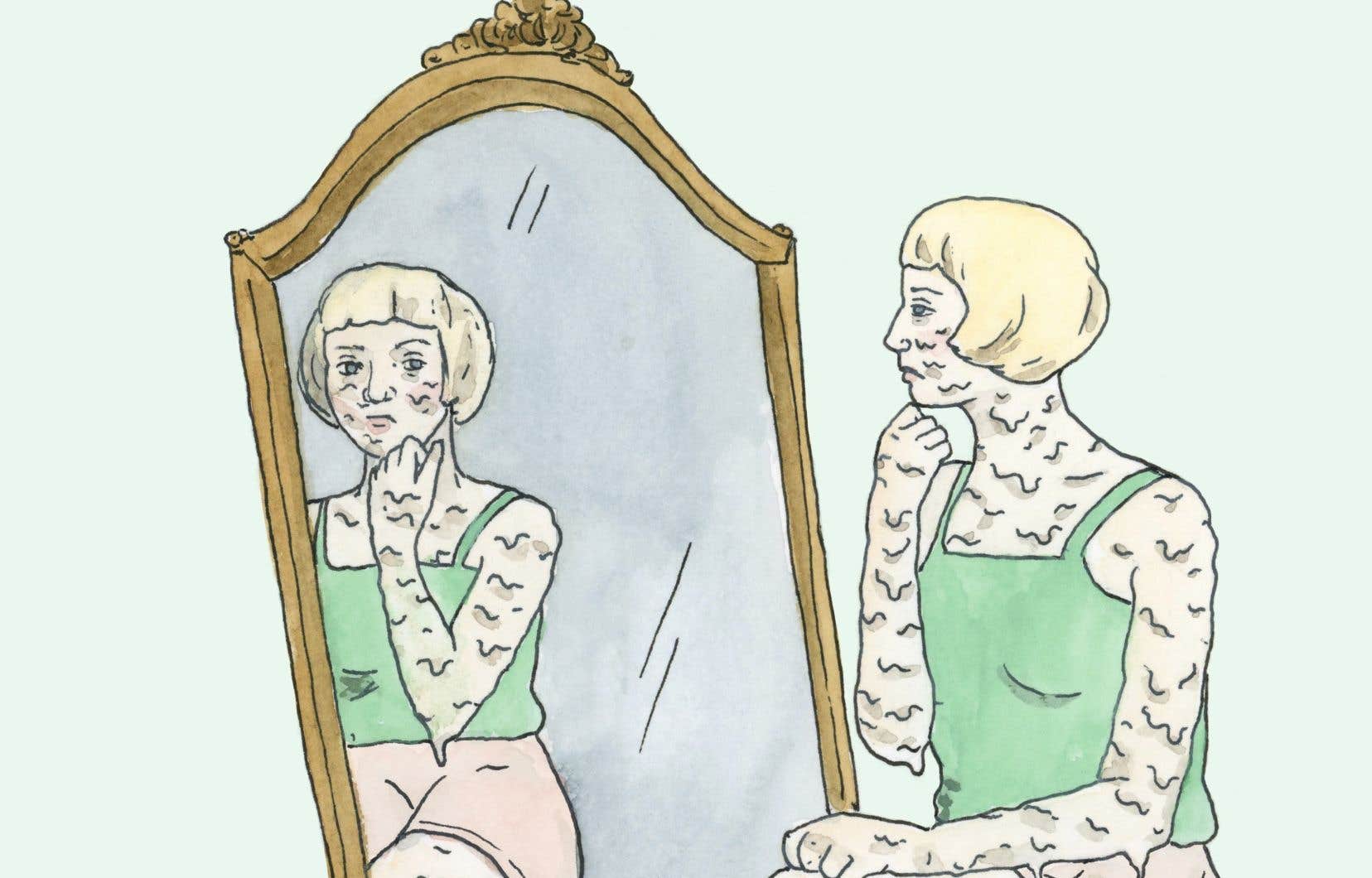In 2007, Nelly Arcan published The child in the mirror, a “cruel tale for young girls” illustrated by Pascale Bourguignon. Less known and less acclaimed than Whore Or Crazy, this story nevertheless constitutes an ideal entry point into his world. On the occasion of its reissue in full format – this time accompanied by illustrations by Arizona O’Neill -, The duty reviews its reception, its importance and its relevance.
In this falsely naive story written at a child’s level – extended version of the short story My mother’s namepublished in the journal Zinc —, Nelly Arcan remembers the difficult transition between a troubled childhood, shaped by a father’s gaze and a mother’s silence, and an anxiety-provoking adolescence, dictated by the quest for physical perfection.
The book, published in the wake of the author’s first foray into fiction with Open air (Seuil, 2007), received little attention. “The transition from autofiction to novelistic form in Nelly Arcan benefited from less media coverage compared to her first two stories,” explains Catherine Parent, lecturer in the Department of Literature at Laval University, who notably offered a fifteen-week course on the writer’s corpus.
“ The child in the mirror, perhaps because it was presented as a children’s work, is also very little studied. I don’t think I’ve ever heard the author refer to it in an interview. We rediscovered this text with the posthumous collection Burqa of flesh (Seuil, 2011), which revealed the full version. »
Synthesis
However, the latter holds several keys to the literary universe of Nelly Arcan, revealing the roots of her obsessions with beauty and the perfect body, as well as her relationships with men, women and mirrors.
“When I was little I rarely saw myself, I didn’t have time. […] It was the good times of beauty not made of canons, beauty not impregnated with the sex of men, that of facetiousness, of self-deprecation where we find ourselves at ease in front of the features of our face which will become a thankless day; it was a time when it was nice to make yourself look ugly, for a laugh; it was the time before the dramatization of the face where everything had to be remodeled, the time before the time of magnetization, of the greatest seriousness of the capture of men,” she writes.
“It’s all there,” summarizes Karine Rosso, professor in the Department of Literary Studies at UQAM and author of My enemy Nelly (Hammock, 2019). “The story dissects several of the themes that are present in all of the writer’s work, such as reflection, the presentation of oneself, the father, the mother, the aging female body and anorexia. The child in the mirror is like a synthesis, a concentrate of Nelly Arcan’s writing, to which we add a layer of meaning and complexity through images. It really is a little gem, a perfect little object. »
A contemporary reflection
Although the first version of the text was published in 2007, it addresses subjects and questions that undoubtedly still haunt young women today. “ The child in the mirror perhaps speaks more to today’s adolescent girls than to those of 20 years ago, because they were born into a world where image dominates all spheres of their lives”, underlines Mélanie Vincelette, founder of the Marchand de Feuilles editions.
“Nelly was really at the forefront of a movement that was taking shape. She knew how to name the contradictions that inhabit us. She is a great philosopher of the condition of women and everything she has written is a teaching, a warning. »
Karine Rosso agrees. “Every time I teach Nelly Arcan, I am appalled to see how much she speaks to young people. This text was written in the early days of social media and, yet, we have the impression that this is what she is talking about. She saw the staging of oneself and the trap of the mirror, of the image and the quest for perfection, she predicted the obsession with skin care. Like all great writers, she was a sensitive being, capable of perceiving what was taking shape in society. I miss her so much. I would really like to know his point of view on the world today. »
Nelly and the women
The new edition of The child in the mirror also allows us to address more unknown and luminous sides of the work and legacy of Nelly Arcan, in particular the importance of female friendship in her life, which unfolds here around her relationship with her first friend. childhood, Marie-Claude, whom she revered as much as she envied.
This solidarity is also highlighted by the illustrations of Arizona O’Neill. The artist’s soft, childish, pastel-hued features reveal ballerinas, punkettes, pranksters, accomplices, almost in fusion, lost in a forest of mirrors that seeks to oppose them at all costs.
“I think it’s hard not to read Nelly Arcan’s writings with a dark lens. In 2007, this is certainly what was expected of her, underlines the illustrator. We often focus on her relationships with men, while she had beautiful, complex and deep relationships with women. She describes them with a deft mix of poetry and grotesqueness, and I really wanted to capture that in images. »
While we think a lot about rivalry at Nelly Arcan, Catherine Parent sees it more as a driving force for female solidarity. “We perceive her as the enemy of other women. In my opinion, by pointing out male domination as a factor of separation from women, she opens the door to a form of sorority. »
What the author of Whore tells, ultimately, it is the shared experience of femininity. “Her work loosens tongues, makes you want to confide, to have a certain self-reflexivity about your own relationship to the image,” explains Karine Rosso. Nelly had the delicacy not to place herself outside the injunctions on normalized beauty. She criticized from within, with empathetic, but not overbearing, speech. »
This is also why his voice still resonates so much.
